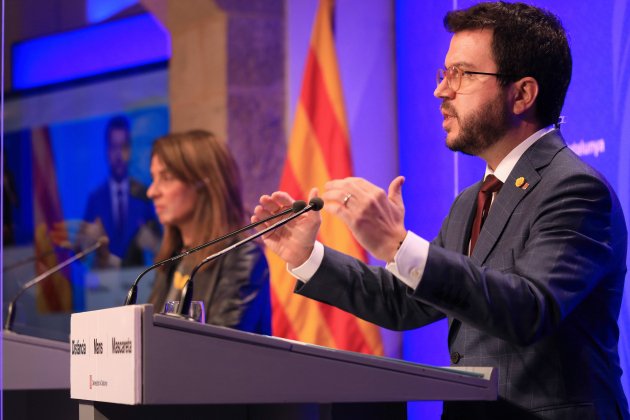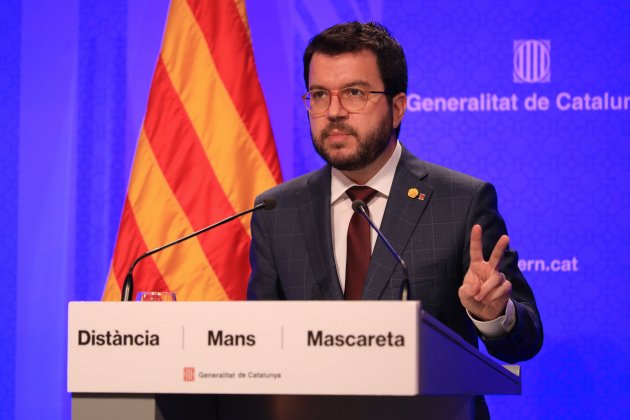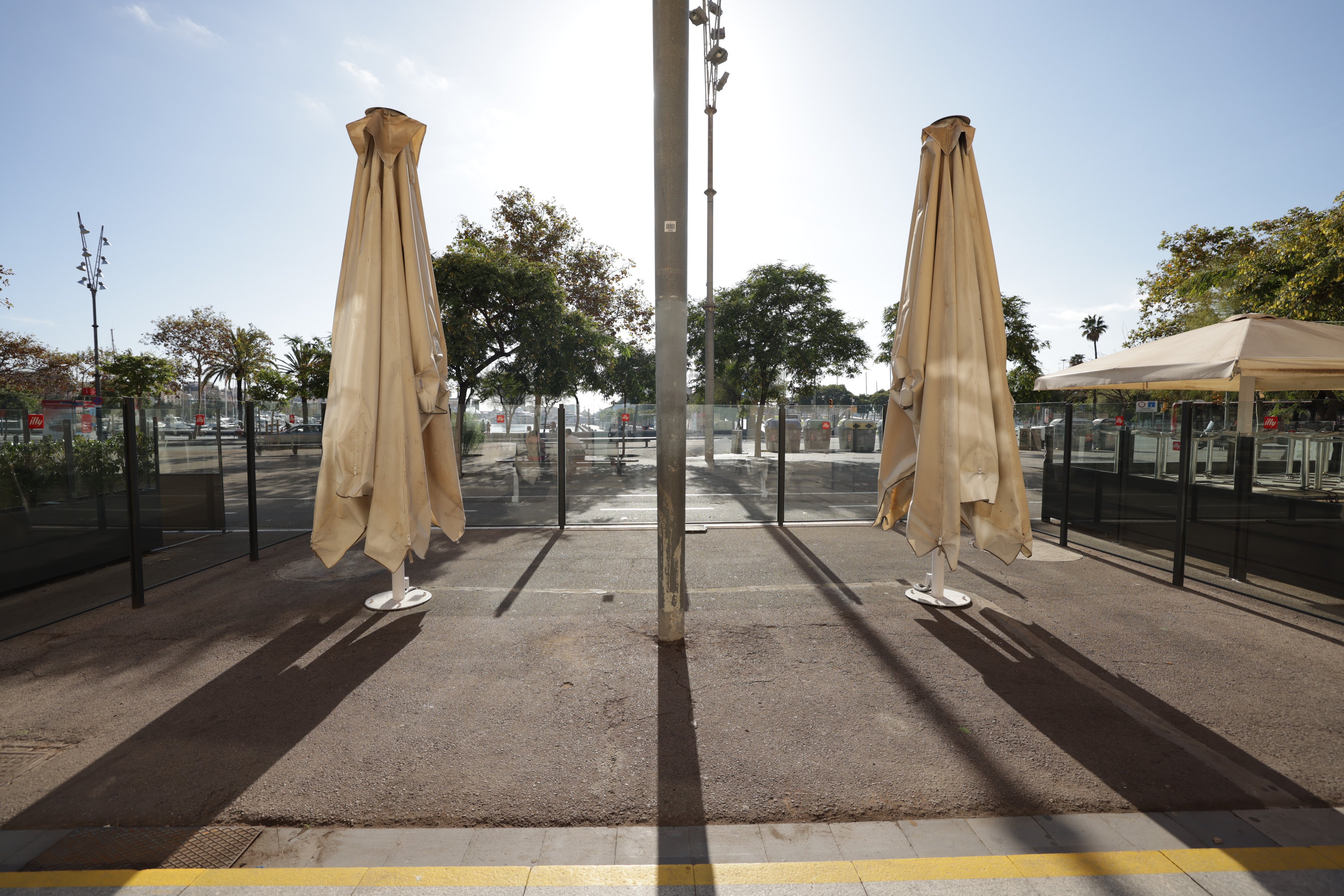It has been called the 'Plan for the progressive opening of activities'; the Catalan government is reluctant to label it as de-escalation because "it's not a plan to get back to normal, not yet." According to Catalonia's vice president Pere Aragonès, until there is a vaccine, it will not be possible to return to normal life. The final document is the result of an intense and stressful negotiation. The tension was with the economic sectors, which are desperate for some air after being forced to close in the second wave of the pandemic, and also, within the Catalan executive itself. ERC and JxCat once again fought in public, although they finally reached a truce forced by the circumstances. The announcement arrives only just in time for the weekend, four days from when it will come into force, on Monday 23rd. The main new development: bars and restaurants can remain open until 9:30pm.
The roadmap established by the plan provides for four phases that are to last at least two weeks each. It will be possible to advance to the next stage as long as the Rt, the virus transmission index is below 1. These two-week periods mean that the fourth phase will not be completed until 18th January at the earliest. The plan was presented this Thursday by Pere Aragonès along with presidency minister Meritxell Budó. Both put a strong emphasis on caution, making it clear that no-one should expect a return to normal in two months, but rather, that Catalonia is in for the long haul.

Budó and Aragonès
The ultimate goal, to overcome what the plan calls "the second wave", is based on three indicators: the Rt, the daily number of new confirmed cases, and the occupancy of intensive care beds. The optimal situation is for the Rt to be below 1 - which is happening at present; the number of daily new infections to be at most 1,000 - whereas now there are about 2,000 per day in Catalonia; and for there to be a maximum of 300 Covid-19 patients in intensive care. Currently there are more than 500.
🔓 S’inicia l’obertura progressiva d’algunes activitats amb mesures a tot Catalunya.
— Salut (@salutcat) November 19, 2020
La primera fase entrarà en vigor dilluns i permet obrir bars i restaurants amb el 30% d'aforament i la cultura i les instal·lacions esportives a l'aire lliure al 50%. pic.twitter.com/oczwT5Flvj
Hospitality industry can reopen - and until 9:30pm
The initial idea, as outlined in the controversial draft that was leaked on Monday, suggested that restaurants would only be able to open until five in the afternoon from next Monday. However, after heated discussion, it was agreed to give the sector a little more breathing space: thus, bars, restaurants and hotels can serve customers for a few more hours and don't have to lower their roller blinds until after dark, at 9:30pm, although they still have to comply with the curfew that remains in force at 10pm until next year under the new plan - in fact, until the last phase is completed on January 18th at the earliest.
Along with the longer than expected hours allowed for bars, the maximum occupancy permitted is also extended beyond what the draft version proposed. Instead of allowing only one third of normal capacity on terraces, the final document gives no limit for outdoor occupancy. However, at all times a distance of two metres between tables must be maintained, with a maximum of four diners per table unless they are a bubble group.
Concert halls will be able to open to 50% of normal capacity and this percentage will be increased to 70% from the second week of December. Shopping malls will be able to open from the second week of December with a capacity of 30% - assuming the indicators continue to allow it.
As for sports, from Monday 23rd November, it will be possible to resume activity at 30% capacity for indoor venues and 50% outdoors.
Municipal confinement until after December "long weekend"
The first phase of reopening, which begins on Monday, is planned to last at least two weeks, that is, until December 7th. During this period, it will not yet be possible to leave the municipality on weekends. By Tuesday December 8th - the public holiday for the Day of the Immaculate Conception - restrictions should be eased, but not in time to cover the four-day break that some will have beginning on Saturday 5th.
The following weekend, starting Saturday 12th, the Catalan public will be able to move beyond municipal perimeters, with the new border being the county or comarca. The county line barrier will be lifted at the start of the third phase of de-escalation, on December 21st, when it will be possible to travel anywhere in Catalonia, all things being equal.

Acting Catalan president Pere Aragonès
Christmas and New Year under curfew
When the ERC-JxCat government announced the current restrictions for Catalonia on October 30th, it was predicted - although never officially - that it would be possible to relax the confinement in the run-up to the Christmas festivities. Not only for psychological reasons, but also to try to revive economic activity and encourage local consumer spending during the Christmas retail campaign, which businesses are desperate to take advantage of.
According to the calendar approved by Procicat today, the forecast is that Christmas meals will be restricted to a maximum of 10 people. It will not be possible to enter or leave Catalonia, but it will be possible to move around the whole of Catalonia. However, the executive has promised to study whether some measures can be made more flexible on certain days, although it warns that "sacrifices" will have to be made.
Nevertheless, the government is aware that it cannot "put a policeman in every home". Aragonès said as much, calling for "individual responsibility" from the Catalan public. He asked people not to cheat, because the bottom line is that "the virus cannot be fooled".
CHECKLIST of the Covid measures that will apply in Catalonia on Monday 23rd November

